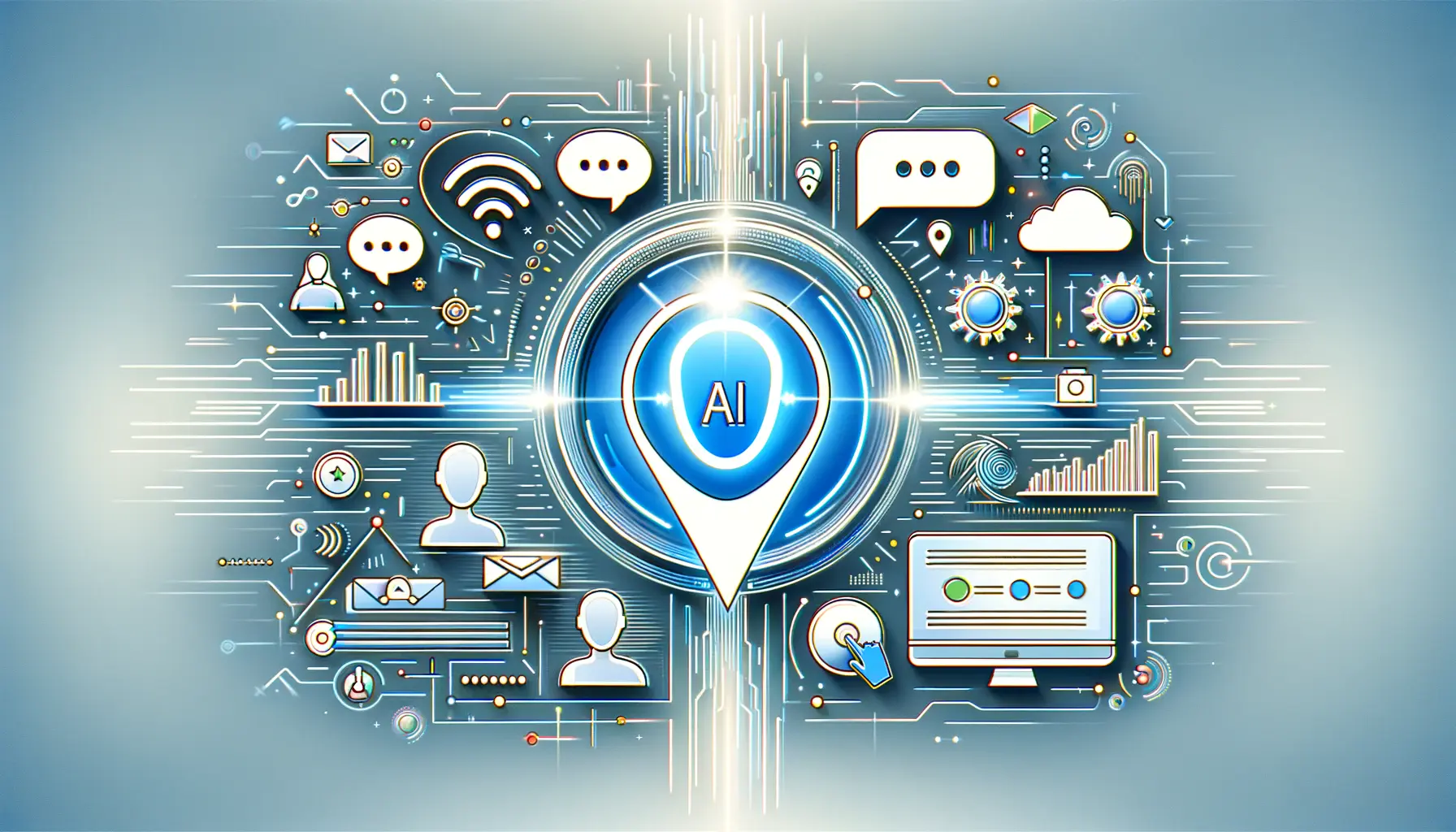In an era where digital transformation is not just an option but a necessity, non-profits are constantly exploring innovative ways to amplify their impact and engage with their communities more effectively.
Google’s Bard, a cutting-edge generative AI, emerges as a beacon of hope and innovation for non-profits, offering them a unique opportunity to harness the power of artificial intelligence to further their causes.
This article delves into how Google’s Bard can revolutionize the way non-profits operate, communicate, and engage with their stakeholders.
At its core, Google’s Bard is designed to be more than just a chatbot.
It is a versatile tool that can generate creative content, provide insightful analytics, and even assist in the management of day-to-day operations.
For non-profits, which often operate under tight budget constraints and with limited resources, Bard presents an opportunity to leverage technology to do more with less.
By integrating Bard into their digital strategy, non-profits can enhance their productivity, streamline their workflows, and engage with their audience in more meaningful ways.
- Google’s Bard and Its Potential for Non-profits
- Enhancing Communication Strategies with Bard
- Optimizing Fundraising Efforts with Bard
- Streamlining Operations and Project Management
- Advancing Data Analysis and Decision Making
- Empowering Community Engagement and Support
- Adapting to Technological Advancements and Trends
- Embracing the Future with Google’s Bard for Non-profits
- FAQs on Google’s Bard for Non-profits
Google’s Bard and Its Potential for Non-profits
What is Google’s Bard?
Google’s Bard is an advanced generative AI developed by Google, designed to interact in a conversational manner while providing users with information, ideas, and solutions.
It leverages a vast database of information and a sophisticated understanding of language nuances to generate responses that are not only accurate but also contextually relevant.
This makes Bard an invaluable tool for non-profits looking to engage their audience with personalized content and interactions.
The potential of Bard for non-profits lies in its ability to process and analyze large volumes of data quickly and efficiently.
This capability can be harnessed to gain insights into donor behavior, optimize fundraising campaigns, and even identify new engagement opportunities.
Furthermore, Bard’s ability to generate creative content can help non-profits in crafting compelling stories and messages that resonate with their audience, thereby enhancing their marketing and communication efforts.
Revolutionizing Non-profit Engagement
For non-profits, engagement is key to building lasting relationships with donors, volunteers, and the communities they serve.
Google’s Bard offers a new avenue for engagement by enabling personalized interactions at scale.
Whether it’s through personalized email campaigns, interactive Q&A sessions, or generating content for social media, Bard can help non-profits connect with their audience in a more meaningful and impactful way.
Beyond external engagement, Bard also has the potential to transform internal operations.
From automating administrative tasks to facilitating collaboration among team members, Bard can significantly reduce the time and effort required to manage non-profit projects.
This not only improves operational efficiency but also allows non-profit teams to focus more on their core mission-driven activities.
By embracing Google’s Bard, non-profits can unlock new possibilities for engagement, innovation, and impact, setting a new standard for how technology can be used to drive social good.
Enhancing Communication Strategies with Bard
In the digital age, effective communication is crucial for non-profits to spread awareness, rally support, and drive action.
Google’s Bard, with its advanced AI capabilities, offers non-profits a powerful tool to enhance their communication strategies.
By leveraging Bard, non-profits can create more engaging, relevant, and impactful content that resonates with their audience.
Personalized Content Creation
One of the standout features of Bard is its ability to generate personalized content.
This can be particularly beneficial for non-profits aiming to connect with their audience on a more personal level.
Personalized emails, social media posts, and website content can significantly increase engagement rates, encouraging more people to take action.
- Automated email campaigns tailored to donor interests and past interactions
- Customized social media content that speaks directly to different segments of the audience
- Dynamic website content that adapts based on user behavior and preferences
Streamlining Internal Communications
Beyond external communications, Bard can also transform how non-profits manage internal communications.
By automating routine communications and facilitating smoother collaboration, Bard can help non-profit teams work more efficiently and cohesively.
- Automated meeting summaries and action items, enhancing team productivity
- Real-time collaboration on documents and projects, regardless of geographical location
- Streamlined communication channels, reducing the risk of information silos
Incorporating Bard into your non-profit’s communication strategy can not only save time and resources but also create more meaningful interactions with your audience, fostering a stronger community around your cause.
Optimizing Fundraising Efforts with Bard
Fundraising is the lifeline of any non-profit, providing the necessary funds to carry out their mission and make a difference in the world.
In today’s competitive landscape, non-profits must leverage every tool at their disposal to optimize their fundraising efforts.
Google’s Bard, with its sophisticated AI capabilities, offers a promising solution to enhance fundraising strategies and outcomes.
Targeted Fundraising Campaigns
By analyzing data on donor behavior and preferences, Bard can help non-profits create more targeted and effective fundraising campaigns.
This data-driven approach ensures that the right message reaches the right audience at the right time, significantly increasing the chances of success.
- Segmentation of donors based on their interests and past contributions for personalized appeals
- Optimization of campaign messages and channels based on predictive analytics
- Real-time adjustments to campaigns based on ongoing performance data
Enhancing Donor Engagement
Engaging donors is about more than just asking for donations; it’s about building relationships and creating a sense of community.
Bard can assist non-profits in crafting compelling narratives and interactive content that engages donors on a deeper level, encouraging ongoing support.
- Creation of engaging stories that highlight the impact of donations
- Interactive content, such as quizzes and surveys, to involve donors in the mission
- Personalized thank-you messages and updates on how contributions are making a difference
Utilizing Bard to analyze data and automate content creation can free up valuable time for non-profits to focus on building meaningful relationships with their donors, ultimately leading to more successful fundraising efforts.
Streamlining Operations and Project Management
Efficient operations and effective project management are critical for non-profits to maximize their impact and ensure the successful execution of their mission.
The administrative burden can often be overwhelming, especially for organizations with limited staff and resources.
Google’s Bard offers a solution to streamline operations and enhance project management through AI-driven automation and insights.
Automating Administrative Tasks
Administrative tasks, while necessary, can consume a significant amount of time that could otherwise be spent on mission-critical activities.
Bard’s AI capabilities enable the automation of these tasks, improving operational efficiency and allowing non-profit staff to focus on more strategic initiatives.
- Automated data entry and management, reducing manual errors and saving time
- Scheduling and reminders for meetings and events, ensuring nothing falls through the cracks
- Streamlined document and report generation, facilitating easier decision-making
Improving Project Collaboration
Collaboration is at the heart of any successful non-profit project.
Bard can enhance collaboration among team members, volunteers, and stakeholders by providing a centralized platform for communication and project tracking.
This not only improves project outcomes but also fosters a more cohesive team environment.
- Centralized communication channels that keep everyone informed and engaged
- Real-time updates and tracking of project milestones and tasks
- Facilitation of brainstorming and idea generation, leveraging Bard’s AI for creative insights
By leveraging Bard to automate routine tasks and enhance project collaboration, non-profits can achieve greater operational efficiency and effectiveness, allowing them to dedicate more resources to achieving their mission.
Advancing Data Analysis and Decision Making
In the data-driven world of today, the ability to analyze vast amounts of information and make informed decisions is invaluable for non-profits.
Google’s Bard, with its advanced AI and machine learning capabilities, stands as a pivotal tool for non-profits to harness the power of their data, uncover insights, and guide strategic decision-making processes.
Data-Driven Insights for Strategic Planning
Bard’s ability to process and analyze large datasets can provide non-profits with deep insights into their operations, donor behaviors, and market trends.
These insights are crucial for strategic planning, allowing non-profits to allocate resources more effectively, identify new opportunities, and anticipate challenges.
- Analysis of donor data to identify trends and patterns that inform fundraising strategies
- Evaluation of program outcomes to determine areas for improvement or expansion
- Market analysis to identify emerging trends and align non-profit initiatives accordingly
Enhancing Impact Measurement and Reporting
Measuring and reporting on impact is essential for non-profits to demonstrate their value to donors, stakeholders, and the communities they serve.
Bard can automate the collection and analysis of impact data, making it easier for non-profits to quantify their success and communicate their achievements.
- Automated collection of data from various sources to measure program impact
- Generation of comprehensive reports that highlight key achievements and areas for growth
- Visualization of impact data to make it more accessible and understandable for non-technical audiences
Leveraging Bard for data analysis not only enhances a non-profit’s ability to make informed decisions but also strengthens its accountability and transparency, key factors in building trust with donors and supporters.
Empowering Community Engagement and Support
At the heart of every non-profit organization is its community—volunteers, donors, beneficiaries, and supporters who believe in its mission.
Engaging this community effectively is crucial for sustaining support and amplifying impact.
Google’s Bard, with its sophisticated AI, offers innovative ways for non-profits to engage and empower their communities, fostering a deeper connection and encouraging active participation.
Creating Interactive and Engaging Content
Bard’s ability to generate dynamic content can transform how non-profits communicate with their community.
By creating interactive and engaging content, organizations can captivate their audience’s attention, stimulate discussions, and encourage more profound connections with their cause.
- Development of interactive stories and infographics that highlight the non-profit’s work and impact
- Creation of quizzes and games that educate the community about the cause and how they can contribute
- Production of personalized video content that shares success stories and volunteer experiences
Facilitating Community Feedback and Participation
Feedback and active participation from the community are invaluable for non-profits to refine their strategies and programs.
Bard can help facilitate this feedback loop by automating surveys, feedback forms, and social media interactions, making it easier for organizations to listen to and engage with their community.
- Automated surveys and polls to gather feedback on programs and initiatives
- AI-driven analysis of social media interactions to gauge community sentiment and identify areas of interest
- Engagement tools that encourage community members to share their stories and contributions to the cause
By leveraging Bard to enhance community engagement and support, non-profits can build stronger relationships with their supporters, leading to increased advocacy, donations, and volunteerism.
Adapting to Technological Advancements and Trends
The technological landscape is ever-evolving, with new advancements and trends emerging at a rapid pace.
For non-profits to remain relevant and maximize their impact, adapting to these changes is crucial.
Google’s Bard, as a forefront of AI innovation, serves as a vital tool for non-profits to stay ahead of the curve, embracing new technologies to enhance their operations, engagement strategies, and service delivery.
Staying Ahead with AI and Machine Learning
AI and machine learning are revolutionizing the way organizations operate, offering unprecedented opportunities for efficiency, personalization, and insight.
Bard, with its cutting-edge AI capabilities, enables non-profits to leverage these technologies, ensuring they are not left behind as the digital world advances.
- Integration of AI-driven analytics to refine fundraising and marketing strategies
- Use of machine learning to predict trends and adapt strategies accordingly
- Automation of repetitive tasks, allowing staff to focus on strategic and creative work
Embracing Digital Transformation
Digital transformation is no longer optional for non-profits seeking to thrive in the modern world.
Bard can play a pivotal role in this transformation, helping non-profits to digitize their operations, engage with their communities online, and deliver services more effectively through digital channels.
- Development of a digital-first strategy that incorporates AI tools like Bard for operational efficiency
- Enhancement of digital literacy among staff and volunteers to effectively use AI and other digital tools
- Exploration of new digital engagement and service delivery models to better meet the needs of the community
Ignoring technological advancements and trends can leave non-profits at a disadvantage, unable to fully meet their mission or serve their communities effectively. Embracing tools like Google’s Bard is essential for staying competitive and impactful in the digital age.
Embracing the Future with Google’s Bard for Non-profits
As we’ve explored the multifaceted capabilities of Google’s Bard for non-profits, it’s clear that this innovative AI tool offers a transformative potential for organizations dedicated to making a difference.
From enhancing communication strategies to optimizing fundraising efforts, streamlining operations, and beyond, Bard presents an opportunity for non-profits to leverage technology in their quest for greater impact.
The journey through the various applications of Bard underscores the importance of embracing technological advancements to not only survive but thrive in the digital era.
Key Takeaways for Non-profits
In reflecting on the insights shared, several key takeaways emerge for non-profits considering integrating Google’s Bard into their operations:
- Personalization at Scale: Bard’s ability to generate personalized content can significantly enhance donor engagement and community support, making each interaction more meaningful.
- Data-Driven Decision Making: Leveraging Bard for data analysis empowers non-profits with actionable insights, enabling smarter, more strategic decisions.
- Operational Efficiency: Automating administrative tasks with Bard allows non-profits to allocate more resources towards mission-critical activities, improving overall efficiency.
- Adaptability to Change: Staying abreast of technological advancements with tools like Bard ensures non-profits can adapt to the digital landscape, maintaining relevance and effectiveness.
Charting a Path Forward
The exploration of Google’s Bard for non-profits is more than just an examination of a tool; it’s a glimpse into the future of non-profit management and engagement.
As non-profits navigate the challenges and opportunities of the digital age, embracing AI and machine learning technologies like Bard will be crucial for enhancing their capabilities, reaching their goals, and maximizing their impact.
The journey with Bard is just beginning, and for non-profits willing to embark on this path, the potential for transformation and growth is boundless.
In conclusion, Google’s Bard for non-profits is not just a technological innovation; it’s a catalyst for change, offering new avenues for engagement, efficiency, and impact.
By embracing Bard, non-profits can unlock a world of possibilities, driving forward their missions with renewed vigor and vision.
The future is bright for those who leverage the power of AI, and with Bard, the future is here.
FAQs on Google’s Bard for Non-profits
Explore commonly asked questions about leveraging Google’s Bard for non-profit organizations.
Non-profits can use Bard for grant writing, creating donor appeals, and sending personalized emails to boost engagement.
Yes, non-profits with Google for Non-profits can access Bard, especially if they opt into early release features.
No, Bard is not downloadable software but a web-based AI service accessible through Google.
Bard offers charities tools for enhanced communication, creative content generation, and operational efficiency.
Bard and ChatGPT offer similar AI capabilities, but Bard integrates directly with Google’s ecosystem, benefiting non-profits.
Yes, Bard can analyze donor data and optimize fundraising campaigns for better engagement and results.
Bard streamlines project management by automating tasks and facilitating better team collaboration.
Bard’s integration with Google’s tools and services offers unique advantages for non-profit operational efficiency.











